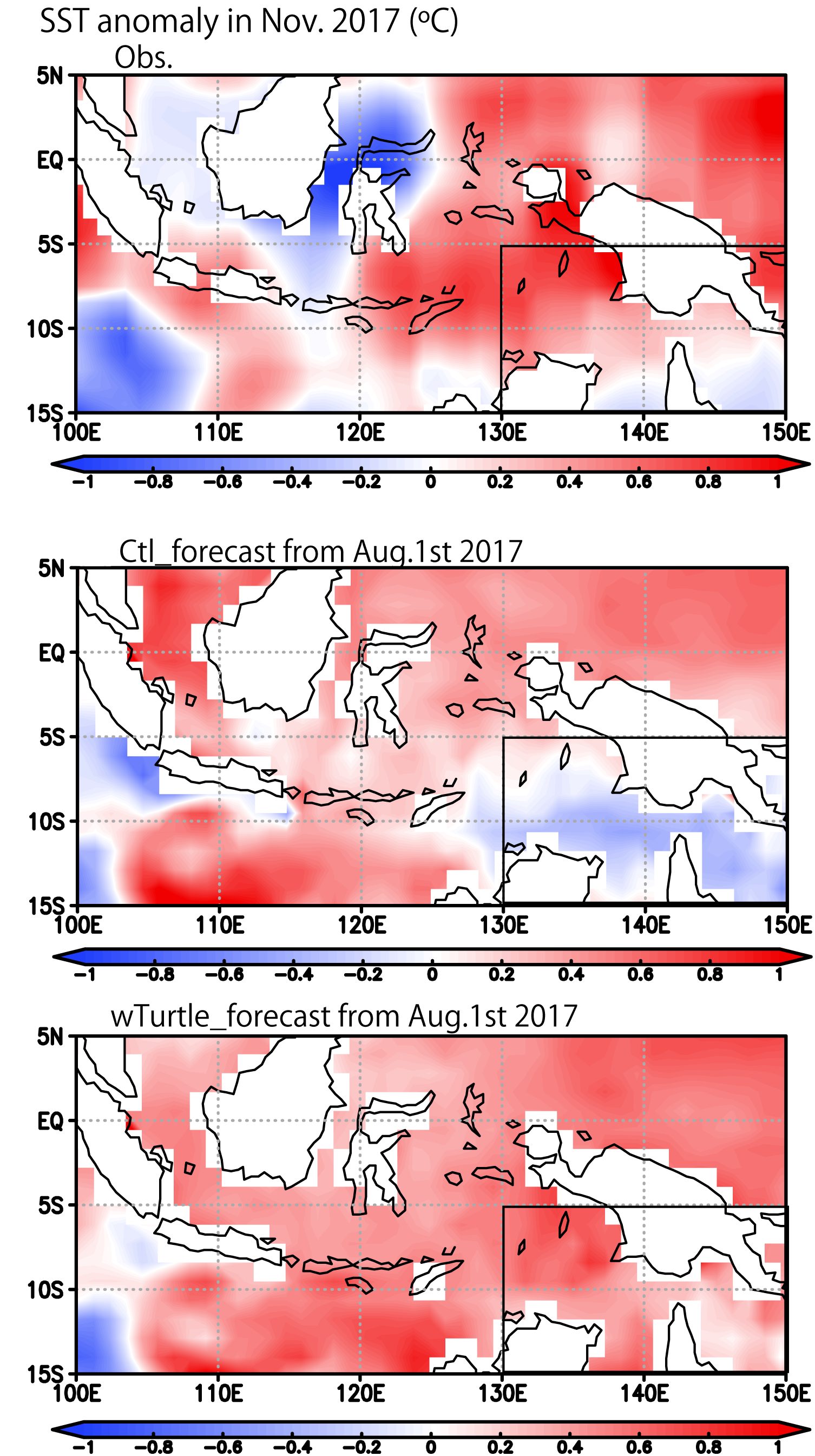← Back
Olive Ridley turtles help in ocean climate forecasting

Olive Ridley sea turtles live in the tropical oceans. They dive to feed, and, as all species of sea turtles, they are threatened these days. To help in understanding and protecting them, some are tracked using Argos satellite telemetry. However, the environmental data thus collected can help other fields of studies, including ocean forecasting at a seasonal scale.
The tropics are the seat of a number of coupled ocean/atmosphere oscillations which impact most of Earth population. Forecasting ENSO in the Pacific Ocean, but also the Indian Ocean Dipole is a major part in predicting what the climate will be in three to six months.
The temperature of the water is one of the keys of accurate coupled ocean-climate forecasting at seasonal time frame, especially under the tropics. Subsurface temperature, in particular, is important since in such tropical areas, the sea surface is almost uniformly heated. Since the remote sensing satellites can only measure the surface temperature, using those do not enable detecting the ocean dynamical features. Such subsurface measurements is only available through in situ instrumentation: classically moored buoys, expandable Bathythermographs, Argo floats, etc. But, as the elephants seals in the Southern Ocean, a number of marine animals can also be used to collect physical oceanography data, including temperature at depths during their dives.
More info about marine animals tracking
Olive Ridley turtles as auxiliary physical oceanographers
Olive Ridley sea turtles (Lepidochelys olivacea) are tropical sea turtles. They dive more frequently into the deeper subsurface ocean and spend more time there than other species of hard-shelled sea turtles. Five olive Ridley turtles were fitted with Temperature-Depth recording tags near the top of Bird’s Head Peninsula, West Papua, Indonesia at the Northernmost peninsula of the New Guinea Island. The Argos PTT was glued on the shell. The glue is made so as to detach within one year, in order that the turtle won’t live the rest of its life (or its life up to its next molt) with a useless device on its back. The five olive Ridley turtles migrated in the Arafura Sea, between northern Australia and New Guinea Island and had been tracked for three months. This Sea is not very well sampled by automated systems, which adds to the interest of collecting data there.

Tracks of the five olive Ridley turtles (top), and temperature profiles (bottom). More than 1000 profiles were thus recorded for the five individuals during the three months of their tracking (credit Japan Agency for Marine-Earth Science and Technology)

Sea Surface Temperature anomalies with respect to the seasonal means. Top, the satellite observation on November 2017. Middle, output of the model assimilating the automated systems only; bottom output of the model assimilating also the turtles’ data. The run with the turtles’ data, higher by 0.2°C than the one without in the black-lined area at the South-East corner, is closer to the measurements done at that time (credit Japan Agency for Marine-Earth Science and Technology)
The tracks were analyzed for the turtles’ behavior and biology understanding primarily, but they and the subsurface temperature records were also assimilated into an ocean–atmosphere–land–sea ice coupled climate model (SINTEX-F2 coupled model). The model was run with and without the turtles’ temperature profiles. The runs with the turtles’ data show a 0.2°C higher value of temperature than the run without them three months later, in line with the satellite measurements done at that time.
Another interest in using data collected by marine animals such as sea turtles is that they go nearer the coasts than the automated systems, while continuing their collection. Moreover, if e.g. olive Ridley turtles’ tracking might not be done every year in the Arafura sea, other marine animal can also be monitored for their diving behavior in the area. Combining the different species in different oceans should enable to cover the whole World ocean at all time estimate Dr Sato.
Reference
- Doi T, Storto A, Fukuoka T, Suganuma H and Sato K (2019) Impacts of Temperature Measurements From Sea Turtles on Seasonal Prediction Around the Arafura Sea. Front. Mar. Sci. 6:719. doi: 10.3389/fmars.2019.00719
Photo: an Olive Ridley turtle with an Argos PTT glued on its back. The glue is made so that the device will fall off within one year (credit Katsufumi Sato, University of Tokyo)
